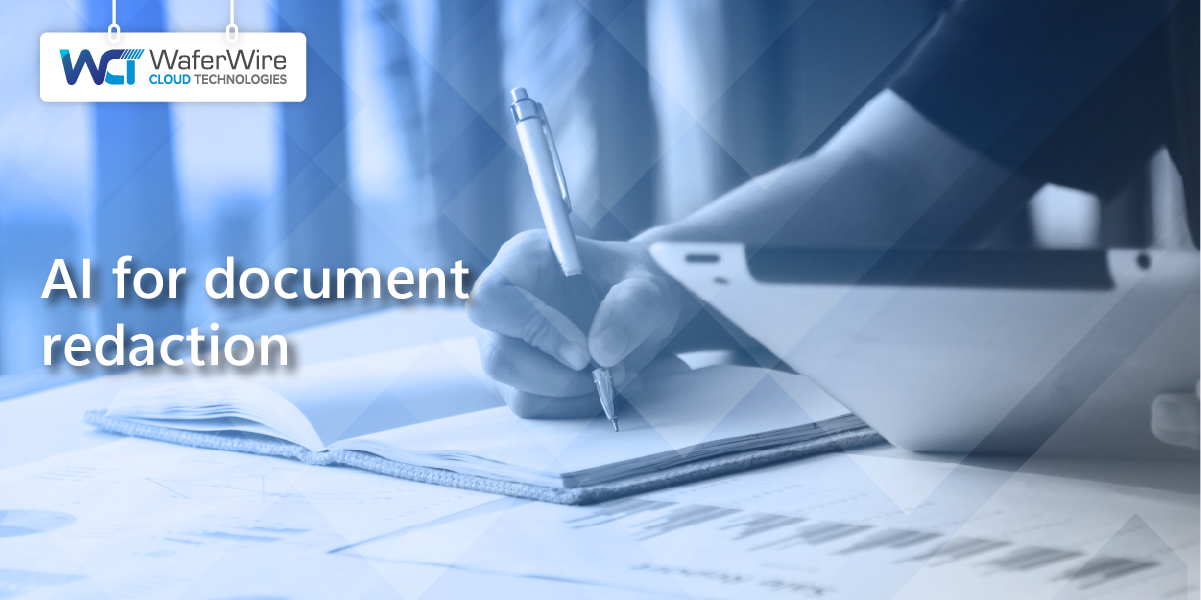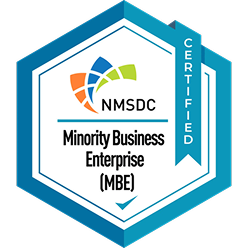

Imagine a legal firm managing hundreds of case files with critical client information. Customarily, redacting sensitive information involved manually scanning each document, highlighting private details, and then carefully blacking them out. However, this manual process is inefficient and poses a significant risk of overlooking sensitive data, leading to potential breaches and legal consequences.Enter AI-Driven document redaction and data privacy - a revolutionary solution that automates and enhances this redaction process. Powered by artificial intelligence, this technology employs advanced algorithms that automatically identify and redact sensitive information from documents.Whether it is a name, social security number, financial data, or medical records, AI meticulously and accurately protects sensitive content, ensuring data privacy and compliance.
The document redaction process with AI-based models involves several steps. Each step contributes to the accurate and efficient identification and removal of sensitive information. Here's a detailed explanation of the process:Data collection and preprocessing:
Model selection and training:
Document analysis and tokenization:
Contextual understanding:
Sensitive information detection:
Redaction decision:
Redaction process:
Review and validation:
Iterative refinement:
Implementing an AI-driven document redaction and data privacy solution in a SharePoint environment can significantly enhance your data security capabilities. Here is a step-by-step guide to get started:
Enhanced efficiency and accuracy:AI-Driven document redaction leverages advanced algorithms to streamline and improve the redaction process. By automating the identification and removal of sensitive information, the technology allows businesses to redact documents quickly and accurately.For instance, a large financial institution dealing with customer loan applications can use AI-driven document redaction to swiftly redact personal information such as social security numbers and financial data. This enhanced efficiency saves time and ensures that no critical data is unintentionally exposed, mitigating the risk of data breaches.Compliance with data privacy regulations:Data privacy regulations, such as GDPR (General Data Protection Regulation) and HIPAA (Health Insurance Portability and Accountability Act), demand strict adherence to protect sensitive information. AI-Driven document redaction is a crucial tool for businesses to ensure compliance with these regulations.For example, a healthcare organization handling patient records can utilize the technology to automatically redact patient names, medical IDs, and other protected health information. By doing so, the organization stays in line with HIPAA regulations, avoiding hefty fines and maintaining its reputation as a trusted healthcare provider.Protection against insider threats:Insider threats, whether intentional or unintentional, pose a significant risk to data security within organizations. AI-driven document redaction mitigates this risk by controlling access to sensitive information. Only authorized individuals with appropriate permissions can view the redacted content, preventing unauthorized access.For instance, a legal firm handling sensitive client information can employ AI-driven document Redaction to protect confidential case details. This ensures that only authorized legal professionals can access relevant information, safeguarding client privacy and preventing insider threats.Seamless integration with existing workflows:AI-driven document redaction seamlessly integrates with existing document management systems and workflows. This user-friendly and adaptable solution enhances usability and efficiency across various industries.For example, a financial institution managing client contracts can easily incorporate AI-driven document redaction into its document management system. This integration streamlines the redaction process, allowing the institution to securely share contract information with authorized parties while keeping sensitive data confidential from others.
Curious to learn more about the art of document redaction and how WaferWire can help safeguard your sensitive information?
Problem: A leading fintech company faced a significant challenge in protecting sensitive customer data, such as bank statements, credit reports, loan applications, and personal identifiers. Their document management process relied on manual redaction, leading to several issues. Customer data was at risk due to potential human errors, resulting in accidental disclosures. Moreover, the manual approach proved to be time-consuming and inefficient, affecting customer service and operational productivity.Customer suffering and loss: As the company processed a vast amount of sensitive financial data, any data breach or unauthorized disclosure would have severe consequences. Their customers were vulnerable to identity theft, fraud, and potential financial losses. The lack of robust data protection measures also exposed the company to legal risks and potential non-compliance with financial regulations, leading to damaged trust among their clientele.Solution: To address these challenges and protect their customers from potential data breaches, the fintech firm wanted an AI-based document redaction solution. They recognized that AI-driven solutions offered advanced capabilities, including contextual understanding and higher accuracy in detecting and redacting sensitive information. The decision to implement AI-based redaction was driven by several factors:
Step 1: Data Collection and Preprocessing: We collected a diverse dataset of financial documents containing sensitive information, such as bank statements, credit reports, loan applications, and customer IDs. This data was preprocessed by removing irrelevant content and ensuring consistent formatting.Step 2: Model Selection and Training: We selected a state-of-the-art NLP-based redaction model, ROBERTa, known for its contextual understanding. We trained the model on their preprocessed dataset, using supervised learning to identify sensitive data patterns.Step 3: Implementing the Redaction Process: Once the model was trained, we integrated it into their document management system. We created a secure and role-based access control mechanism to ensure only authorized personnel could access and use the redaction tool.Step 4: Document Analysis and Tokenization: When a new document is uploaded into the system, the AI model processes the text, breaking it down into tokens through tokenization. This allowed the model to understand the context and relationships between words.Step 5: Sensitive Information Detection and Contextual Understanding: The AI model scanned the document's tokens to detect sensitive information like social security numbers, account numbers, and other financial details. The model's contextual understanding enabled it to differentiate between similar terms in different contexts.Step 6: Redaction Decision and Validation: Based on the detection results, the AI model made decisions on the information needed to be redacted. The system provided a confidence score for each redaction decision. A human reviewer validated the redacted document to ensure accuracy and reviewed any low-confidence redactions.Step 7: Redaction Process and Reporting: The AI model redacted the detected sensitive information by replacing it with "[REDACTED]" or removing it entirely from the document. A detailed redaction report was generated, capturing the redacted information and actions taken.Step 8: Iterative Refinement and Continuous Learning: We regularly monitored the redaction process and collected feedback from reviewers. We used this feedback to fine-tune the model iteratively, improving its accuracy and reducing false positives.
To summarize, in a world where data security and privacy are of paramount importance, AI-driven document redaction emerged as a vital tool for businesses across industries. Whether it is healthcare, legal, or financial sectors, the application of AI in document redaction brings unparalleled benefits, enabling secure data sharing, regulatory compliance, and protection against insider threats.With AI-driven document redaction becoming a standard practice, businesses can confidently navigate the digital landscape, safeguarding sensitive information, and fostering trust among their valued customers and partners. Embracing this revolutionary solution is not just a choice; it is an essential step towards establishing a secure and reliable data management ecosystem.
